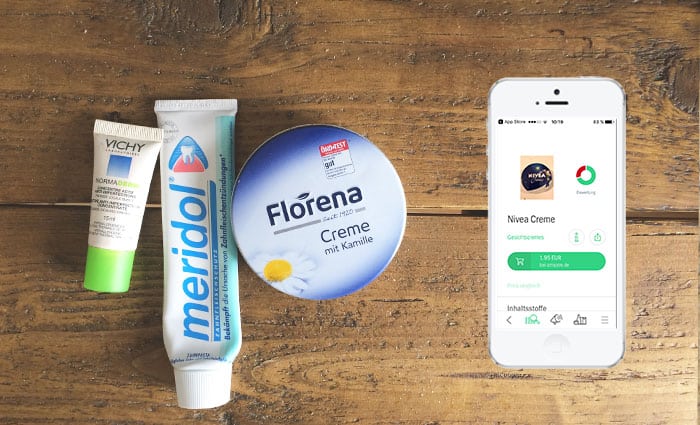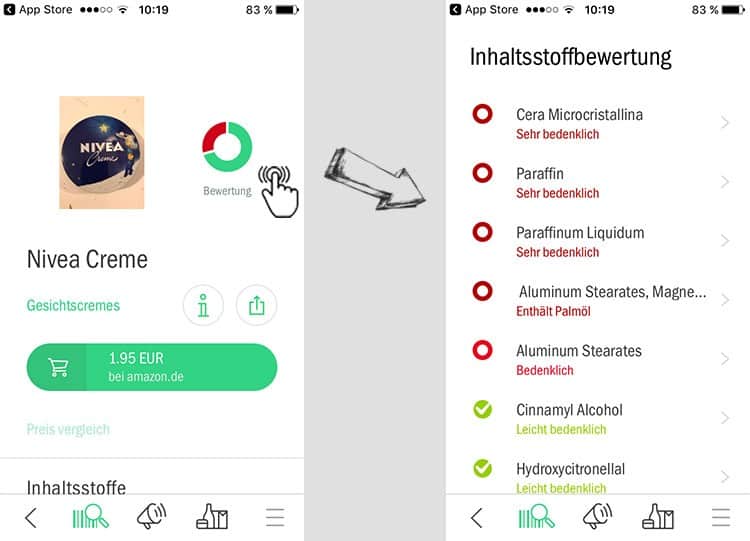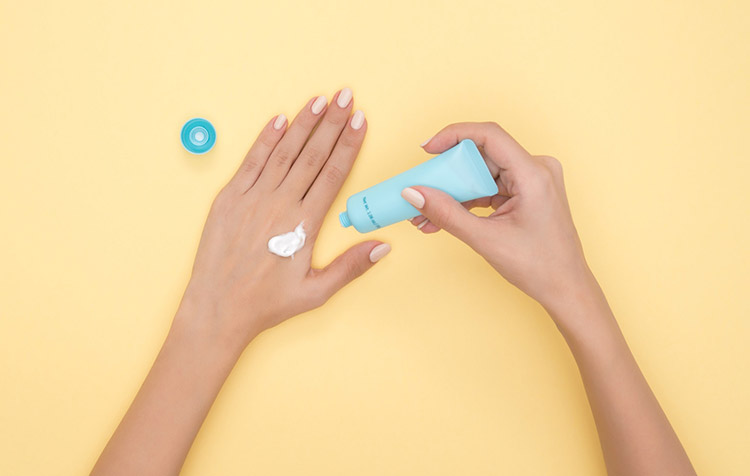The Microplastics in cosmetics is not yet known by everyone. But many cosmetic products such as toothpaste, shower gel or lipstick contain a high proportion of micro- and nanoplastics for stretching. Only under the microscope does the frightening composition of many cosmetics come to light. Since we cannot perceive the danger directly, we rub the creams with Microplastics in the face or even get the microparticles in their mouths through toothpaste. Anyone who showers with shower gel containing plastic automatically ensures that the microplastics end up in the sewage system. However, the microparticles cannot be retained in the sewage treatment plants. Consequence? The microplastic also gets day after day through our care behavior into the rivers and thus also into the oceans. In today's article, I would like to introduce you to some alternatives to the plastic-heavy products and show you how you can easily recognize cosmetics with microplastics.
Microplastic study on plastic particles in cosmetic products
This year, the Bund für Umwelt- und Naturschutz Deutschland (German League for the Environment and Nature Conservation) has this study on the subject of microplastics in cosmetic products. (see also Plastic waste statistics)
The results will open your eyes for good. First of all, the study confirms that one tube of scrub, for example, ensures that up to 2.8 million plastic particles end up in the oceans. An incredible value. How harmful these microplastic particles are for us has not yet been researched with certainty, but in animals the formation of ulcers and even infertility have been proven. It is finally time that the German cosmetics industry wakes up and produces microplastic-free products like some American countries. Plastic in cosmetic products is not necessary and can already be decomposed by natural salts or seeds.
A total of 102,790 cosmetic products were examined in the study; one in three facial scrubs contained polyethylene (PE), but this accounts for only a small part of the overall microplastic problem in cosmetics. This is because microplastics have dozens of designations. A distinction is made between primary and secondary plastic. Primary plastics are, for example, basic pellets, which are the basic material for the production of pastes, powders and co, as well as for the entire plastic production. (see also the article What is plastic?)
The weather (sun, wind, rain, etc.) causes secondary microplastics to form. Since plastic doesn't fade, it just continues to be distributed. But microplastics are not only hiding in cosmetics - Here are a few typical products with microplasticsthat we encounter in everyday life.
How to recognize and avoid microplastics in cosmetics

The results of the aforementioned study showed that by 2050, there could be three times more plastic floating in the ocean than fish. A frightening fact. But what should and can we do to recognize microplastics and give these cosmetics a wide berth?
First of all you should check out the CodeCheck App downloadIt is available for free in the AppStore on Apple and on GooglePlay as an Android app. With the app you can scan any barcode of cosmetic products and get direct feedback on how healthy and sustainable this product is. If there are microplastics or other harmful substances, it will be shown to you directly and you can give the cosmetic product a wide berth.

Consumers today are confused by sheer endless different names on packaging (polyethylene, polypropylene, nylon-12, polyquaternium, etc.). That's why the app is the absolute best approach to putting an end to microplastics. The voluntary self-commitment of some manufacturers is not working. Without pressure, little will change to the products themselves.
Tips for less microplastic
You can implement the following tips immediately to ensure less microplastic:
- Use shampoos without microplastics: While classic shower gels and shampoos such as Dove Intensive Repair Shampoo contain a large number of microplastics, there are also shampoos and shower gels from natural cosmetics that do not contain microplatics. One of these is for example this vegan shampoo from Alverde.
- Use natural shower gel: Also use this shower gel from Weleda, instead of the conventional products. The shower gel also comes without harmful plastic additives.
- Replace classic wash scrub with natural scrub: The usual microplastic is used in this Lavera scrub replaced by natural substances such as silicic acid and jojoba beads. A real alternative for the usual peelings with microplastic content.
- Use lip gloss without microplastic particles: While lipstick usually contains microplastics (polyethylene) and other harmful substances, it comes this lip gloss from Santé without plastic additives.
- Choose toothpaste without microplastics: Everyone should be aware that no cosmetic product contains more microplastics than toothpaste. A product that we use and have in our mouths every day. We recommend this toothpaste from Weleda as a natural alternative to conventional plastic-containing toothpastes.
- Why not make your own products? All products can also be made wonderfully yourself! Soon there will also be some instructions here! But there are already many wonderful articles that explain exactly how to make them. Learn here how to make your Make toothpaste yourself simply by following your heart.
Microplastics in cosmetic products? Absolutely superfluous!
I hope this post helps you in our common goal of reducing plastic consumption and that we make a difference. Please also read this article through and learn how you can make your entire everyday life plastic-free from now on.
Stay healthy,

PS.: Learn here, how you can work completely without Plastic live you can. By the way: If you should also organize your own beach cleanup on vacation, please come to our joint Facebook group for CleanUps and share an action. Because you can be really proud of it!






Since I read that the University of Vienna has detected microplastics in all human samples from 5 continents, I have to say what are we doing to our planet and ourselves ..... and why do so few people care?
Hi Coco! Because the people who currently sit at the longer lever in politics & economy have written out for profit and not for environmental protection. Somewhere understandable, but today we have possibilities to bring both in harmony.
Best regards
Christoph
Comments are closed.